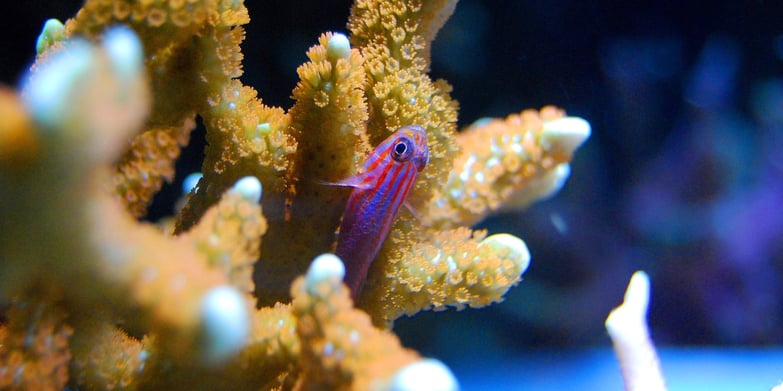
One of the most frequently tested and important parameters in aquariums is pH. Whether you are keeping Discus, African Cichlids, or reef aquariums knowing what your aquarium pH range should be and monitoring it is crucial for success.
This short overview will help anyone who is new to testing pH in aquariums – or anyone who is having trouble with their testing – to better understand what pH is, what range your type of tank should be in, and how to test and maintain your levels.
What is pH?
pH is a measure of the hydrogen ion concentration in your water; the higher the concentration, the more acidic the water is. pH is rated on a scale between 0 and 14, with zero being the most acidic and 14 the most basic (alkaline). A neutral pH is 7; most fish can live in a general range between 6 and 8. However, even slight variations in these numbers can mean trouble for your aquaria.
Ideal pH readings differ between the two main aquarium categories – freshwater and saltwater. Freshwater tanks can especially have big differences in their pH requirements depending on the type of fish you're keeping and their natural geographic origin.
 For example, the freshwater group of fish Discus (Symphysodon) are naturally found in the Amazon River throughout South America and generally require a lower aquarium pH, between 5.0 and 7.0. Proper pH for freshwater aquarium groups like freshwater African Cichlids (from places such as Lake Malawi) is a higher pH in the range of 7.8 to 8.5. Many tropical community fish, such as guppies, prefer a pH range of 6.8 to 7.2.
For example, the freshwater group of fish Discus (Symphysodon) are naturally found in the Amazon River throughout South America and generally require a lower aquarium pH, between 5.0 and 7.0. Proper pH for freshwater aquarium groups like freshwater African Cichlids (from places such as Lake Malawi) is a higher pH in the range of 7.8 to 8.5. Many tropical community fish, such as guppies, prefer a pH range of 6.8 to 7.2.
On the other hand, saltwater and coral reef aquariums all generally require a pH of 8.0 to 8.3.
How Does pH Affect Aquariums?
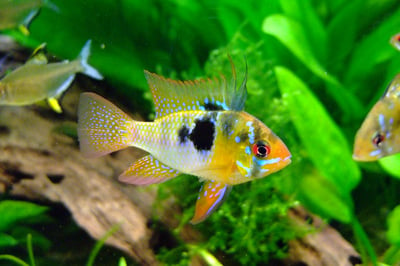
Water chemistry is necessary for successfully keeping an aquarium of any kind, but not all tanks require the same water chemistry. pH is a big part of that difference.
As the water's pH increases, so does the percentage of ammonia in its more toxic form. Ammonia excretion is also impaired at higher pH levels, limiting an organism’s ability to purge itself of waste.
Keeping your aquarium pH stable and in optimal ranges reduces stress on your fish and aquatic animals, helping them resist disease and tolerate other stressors. Maintaining an ideal pH can also dramatically improve growth, behavior, and overall appearance.
The most important things to consider when you begin testing your aquarium's pH are what species of fish you have, what their known pH requirement is, and how to maintain the correct pH range for them.
No matter what, you never want to increase or decrease your pH too much in a short period of time. (Certain species of fish can be much more sensitive than others to fluctuations in range.) Monitoring and maintaining your pH daily is best.
How to Measure Aquarium pH
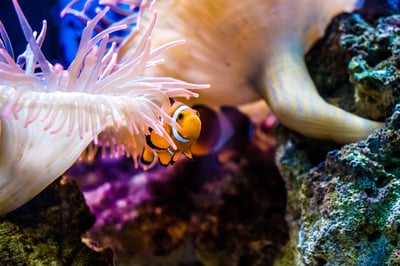
Traditionally pH is measured in aquariums with either testing strips (e.g. litmus paper) or color-matching chemical test kits. These methods are known to be inaccurate, especially within the limited range of aquariums. Litmus paper can become contaminated which leads to inaccurate results, while color match test kits are subjective as they rely on the human eye to detect a color match.
For ideal results and easiest measurements, it's best to use a pH electrode and meter. While that may sound overwhelming to a beginner, Hanna Instruments makes a wide range of affordable, accurate, and easy-to-use pH meters that are great for any aquarium hobbyist on any budget.
Checker Plus pH Tester
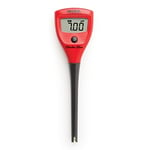 Our Checker Plus is a pocket sized pH tester that is ideal for any aquarium. With a one button operation, replaceable pH electrode, large LCD screen, and easy automatic calibration, this handy economical meter is the perfect device for any aquarist.
Our Checker Plus is a pocket sized pH tester that is ideal for any aquarium. With a one button operation, replaceable pH electrode, large LCD screen, and easy automatic calibration, this handy economical meter is the perfect device for any aquarist.
The Checker Plus is the next generation of the original Hanna Checker pH tester, and is the most popular pH meter in the world with over 1 million meters used since its introduction in 1991.
pHep Waterproof pH Pocket Tester
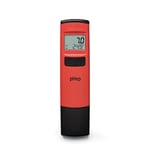 The pHep is an easy-to-use pH water tester that makes monitoring water quality simple.
The pHep is an easy-to-use pH water tester that makes monitoring water quality simple.
This accurate pH tester features 0.1 resolution with automatic two-point calibration and temperature compensation in a single, portable pocket tester. The large LCD displays pH, temperature, calibration buffer tags, battery level, and instability indicator, making the pHep easy and intuitive for any user.
HALO Wireless pH Meter & the Hanna Lab App
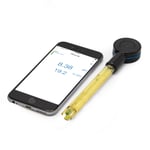 Hanna is the first in the world to introduce smart pH meter. The HALO gives you lab quality with the price of just an electrode, because you use the free Hanna Lab App on your iOS or Android device as your meter.
Hanna is the first in the world to introduce smart pH meter. The HALO gives you lab quality with the price of just an electrode, because you use the free Hanna Lab App on your iOS or Android device as your meter.
The HALO Wireless Field pH Meter comes with features such as automatic temperature compensation, a durable PEI body, and spherical, general purpose glass sensing bulb. This model is ideal for aquariums because of its protective housing.
The Hanna Lab app comes with many features not available in a handheld tester, like the ability to log data and save it for later use, easy calibration, in-app help, and more.
No matter what size tank you have or which types of fish, corals, or other organisms you keep, an optimal pH balance is key to keeping your water-dwelling friends healthy and happy. For more resources on pH testing, electrode maintenance, and more see the pH Guides section of our blog, or submit a question to the Hanna Team.


